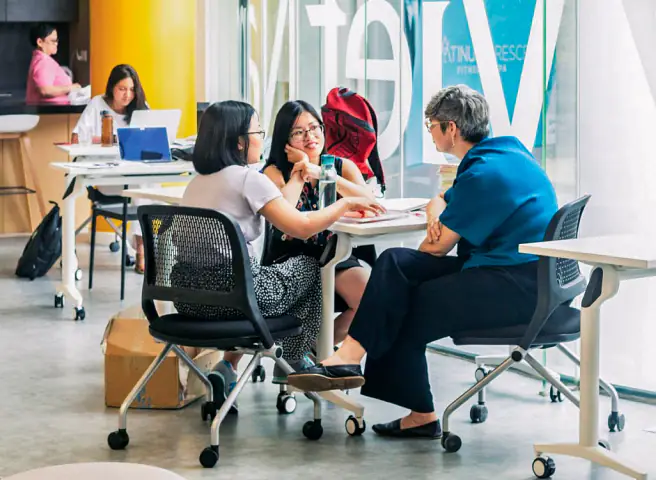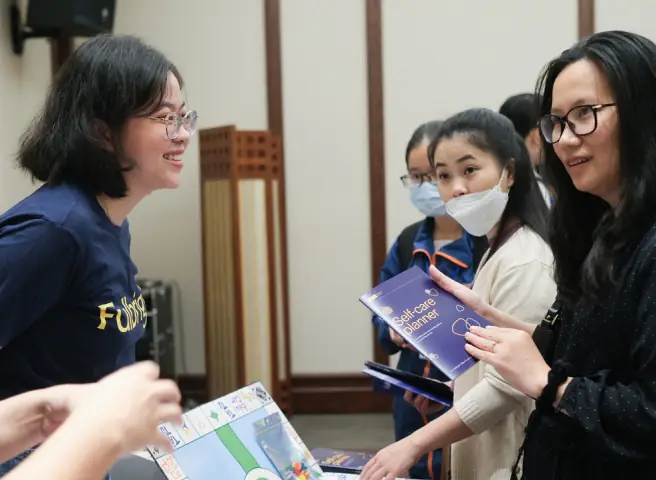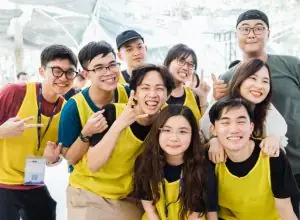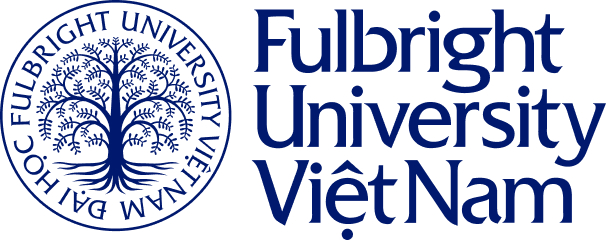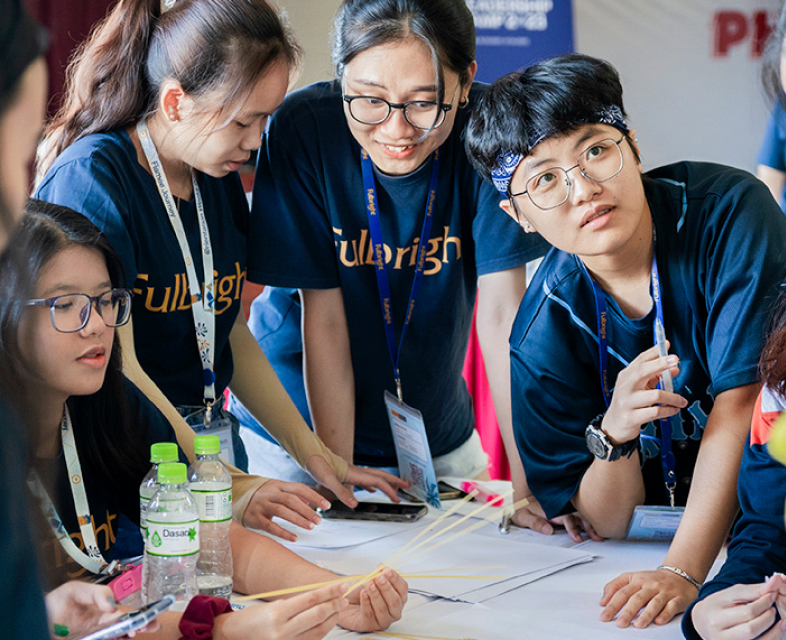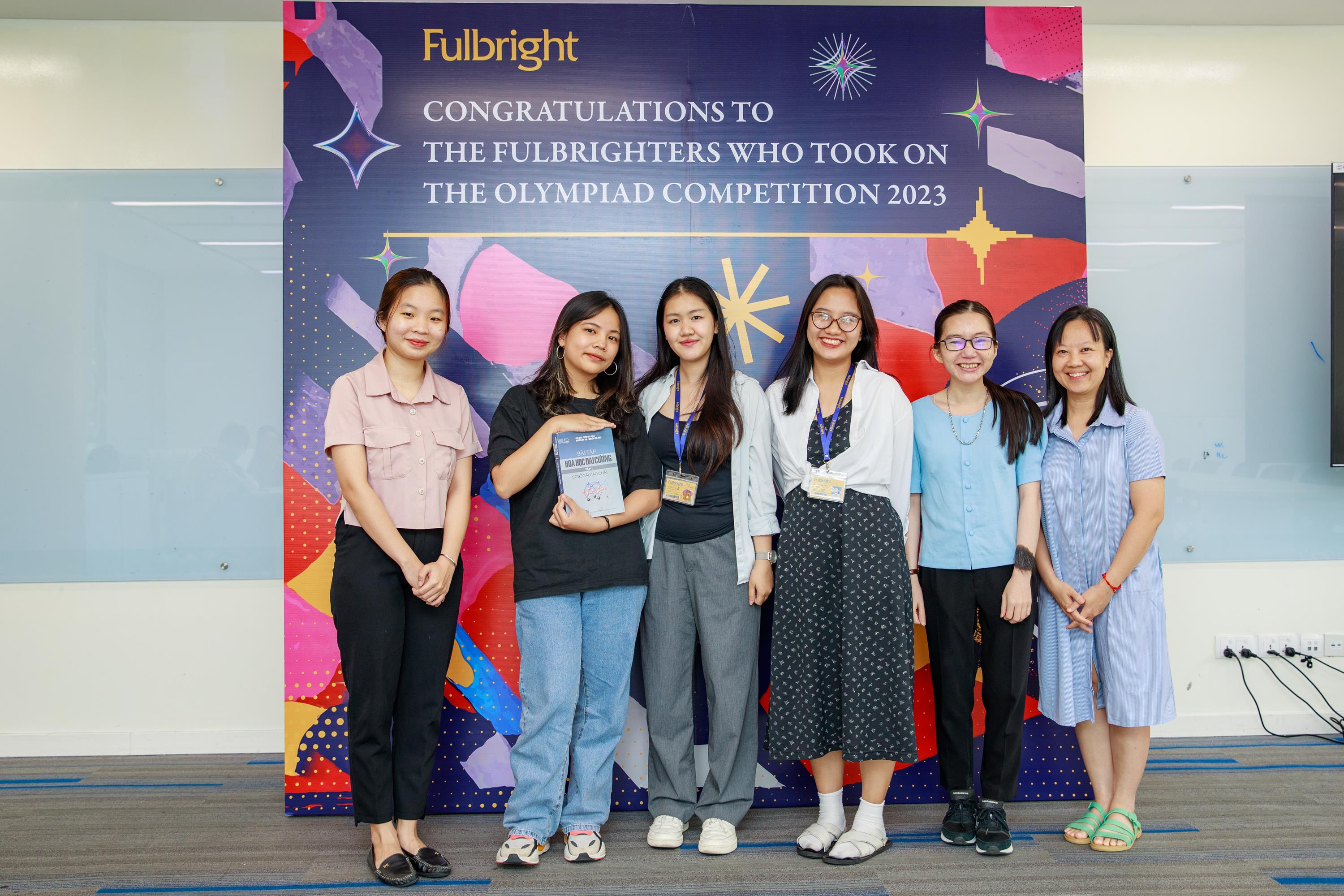
“When I was in high school, I studied lacquer, but the difference with painting wasn’t clear to me, except that we used eggshells and gold. I didn’t really get the cultural implications of why this medium is so important to Vietnam. After our class, readings, and our workshop, when I go back to the museums, I understand how unique and special lacquer is.” Nguyen Ngo Thuc Khang, former Visual Culture student.
Visual culture studies, understood as an academic field that emphasizes the cultural – rather than aesthetic value of visual communication, is a staple of liberal arts education around the world. To build an understanding of visual culture is to contextualize historical, social, political and economic perspectives, a set of competencies valuable to students of all backgrounds.
Visual Culture is a core course at Fulbright, built upon by professors Aaron Anderson and Skultip Sirikantraporn from a prototype devised by students of the Co-Design Year. In its current form, the course is composed with lacquer as its centerpiece. “It was a natural fit to build the class around this medium. Lacquer, or son mai, is the quintessential Vietnamese art, a cornerstone of Vietnamese culture and history.”
A Vietnamese Medium, a Vietnamese Education
Fulbright strives not only to provide an education of international standards, but to do so through a Vietnamese lens. Aaron therefore secured the collaboration of Nguyen Oanh Phi Phi, a celebrated Vietnamese American artist investigating lacquer as a medium for contemporary art. For Aaron, “this class would not have existed had I not met with Phi Phi.”
Phi Phi’s research and interests are deeply aligned with visual culture studies, as well as inherently Vietnam-centered: “with a long historical tradition as a craft, son mai was reinvented as a painting medium in colonial Vietnam in the 1920’s and was the result of the collision between western art tradition and traditional Vietnamese feudal crafts. To me, it is much more than an image-making medium. It is a cultural medium that has embodied all of the transformations in Vietnamese society through changes in its forms and usage.”
Beyond the medium, language is also critical. During the Co-Design phase, students helped formulate the curriculum for the course and identified a mastery of concepts both in Vietnamese and English as a fundamental goal. In the words of Phan Ngoc Lan Nhi, one such Co-Designer, “to learn bilingually is to stay an active participant of Vietnamese culture.” Writing assignments therefore require key concepts to be provided in both languages. Discussions with guest speakers, such as Phi Phi, are also conducted bilingually.

Preparatory work included examining major schools of art and reflecting on their influence in Vietnam, incorporating Vietnamese art history as well as foundational art theory and visual arts. “In class, students must develop the tools to not only theorize Vietnamese society, learning to document and articulate it, but also to contribute to it. They feel incredibly responsible,” reflects Aaron.
As such, an in-depth focus on examining Vietnamese culture opens possibilities for our students to contribute to its understanding. Khanh Minh, one of the participating students, describes her experience: “The course really helps us come up with our own theory of lacquer in Vietnam, which has not really been formalized here. It is not a crystallized identity; we can think about how lacquer painting speaks to us, about new ways to think about Vietnamese tradition. It’s not a monolith. Maybe Vietnamese tradition is also a part of globalization, at a confluence of influences, which can be thought and talked about by anyone from local artisans to overseas art theorists, and Vietnamese college students broadly.”
Theory that comes alive
Khanh Minh’s biggest takeaway is this opportunity to own your education: “As someone who has not studied deeply and professionally about art, I can still make my own theories. It’s about conversation and dialogue, between people who have been in the field for a long time, but also with people like us who have barely started. We can always exchange ideas together.” For Aaron, this is the “hidden goal,” a natural continuation of the course: by giving students the necessary background knowledge as well as equipping them with a shared theoretical foundation, Aaron and Skultip wanted them to be comfortable and confident engaging with artists and other cultural actors.

Last quarter, the course culminated with a lacquer workshop and discussion, facilitated by Oanh Phi Phi and Dinh Van Son, a prolific Vietnamese lacquer artist. On November 30, this quarter, our students had the opportunity to visit Phi Phi’s studio in Da Nang. This is where the Fulbright philosophy of active learning shines: standing at the locus of creation and innovation, students gain insights beyond what classrooms have to offer.
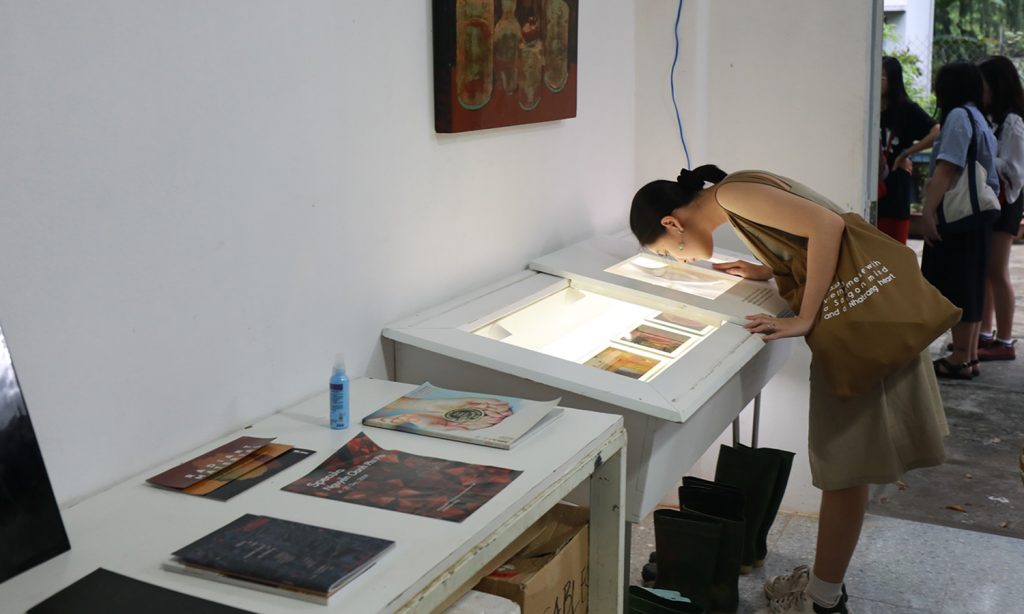
Former Co-Designer Dang Thi Hoai Linh, who also shared in the effort to build the curriculum, observes that “the spirit of Fulbright is experiential. We need to bring students into contact with people working directly in the field we are studying.” In the context of lacquer, Aaron elaborates that “knowledge of son mai comes alive through hands on practice or studio presentations very differently from looking at paintings in a museum. Without seeing or doing, it is hard to understand the creative process or lacquer production.”
As Khanh Minh puts it: “Witnessing every stage of the process, how it comes together from initial sketches to pieces at various stages of progress, layers upon layers, we got to see it is messier than expected. Many projects are ongoing at a given time, so many ideas not fixed in terms of subject or form. You want to explore everything, investigate the details, touch and hold and inquire about the purpose of everything.To me, that is the mindset essential to lifelong learning. ”
This is not about art
Despite common misconceptions, the course does not solely benefit students specializing in art. “Many of our classmates before taking the course were worried that our visual culture class would only help those who specialize through the art stream, but it also benefits students with an engineering or scientific focus. It really encourages thinking about those fields in a transdisciplinary way, especially since lacquer painting requires a deep understanding of iteration processes, chemistry and physics, so we can work together that way,” says Khanh Minh.
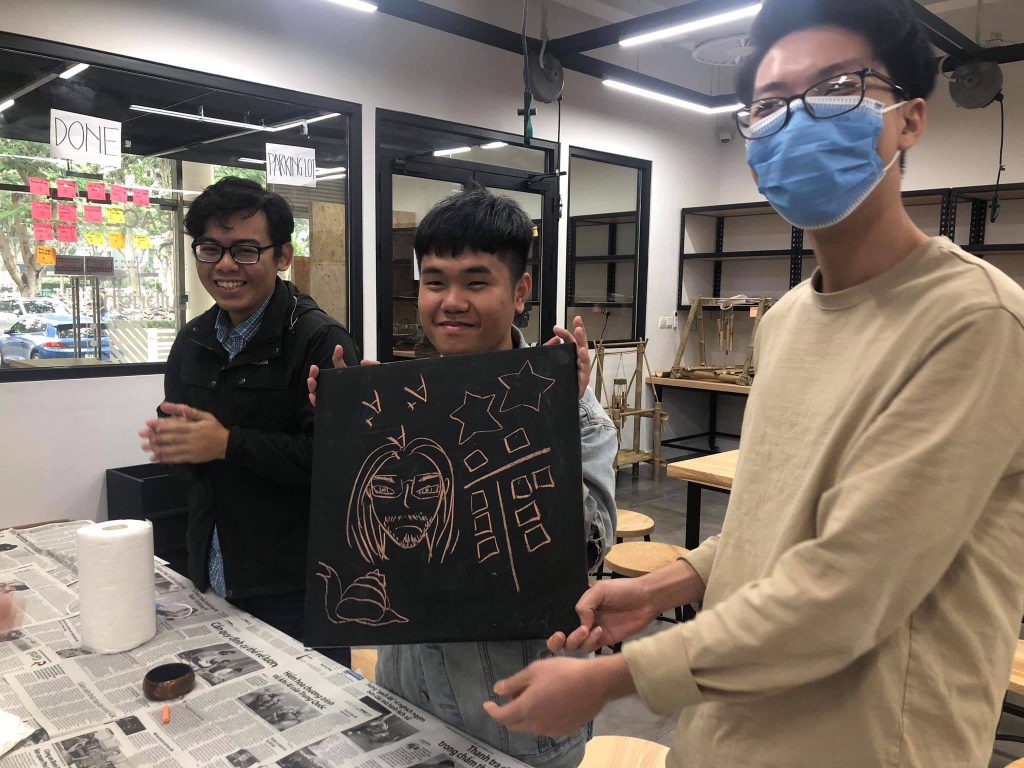
As a student with less of an art focus, Nhut An benefitted equally. “Even though I have a technical approach and interest, this was a great experience for my education. I don’t have a solid background in art, but I was very interested in the technical constraints of lacquer and Phi Phi’s approach. It seems very similar to how engineers tackle a problem: deconstructing into steps in the most optimal manner a problem to achieve a specific goal. An insight I wasn’t expecting is that art making is a form of inquiry, raising questions and sparking debate. This gave me ideas for my final paper.”
As Phi Phi concluded, there is a universal value to art education in how it nurtures critical thinking for all. “There’s a stereotype about artists thinking outside the box, and it’s not just a stereotype. Artists aren’t involved with the demands of an institution and think very independently, trying to communicate their thoughts. To think outside the norm and being able to articulate ideas in varied shapes and forms, and seeing strategies of how value is created, in art or otherwise, is a skill important for anyone.”
Antoine R. Touch
